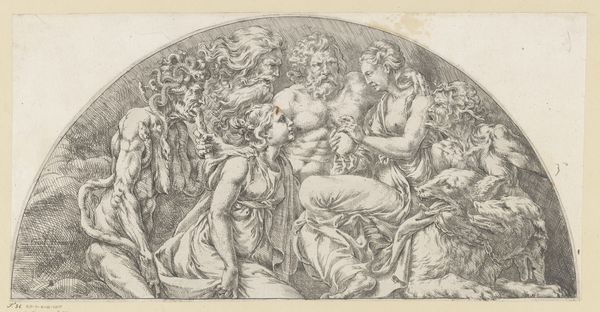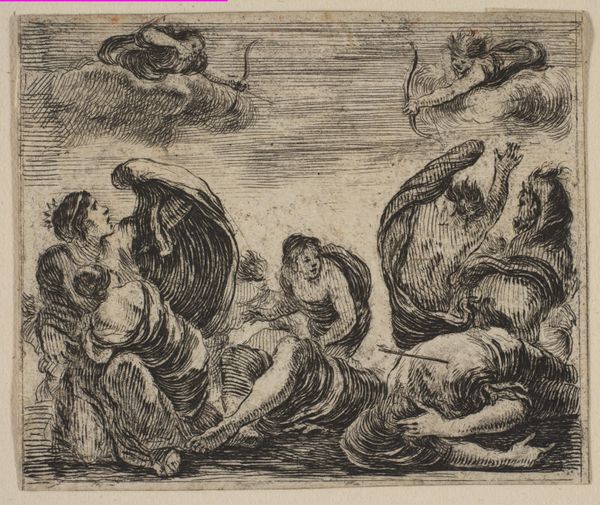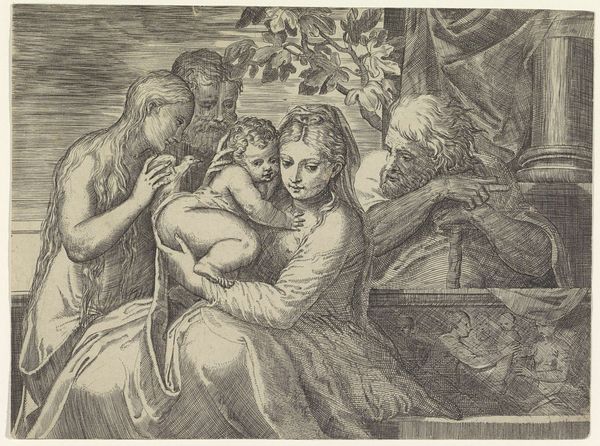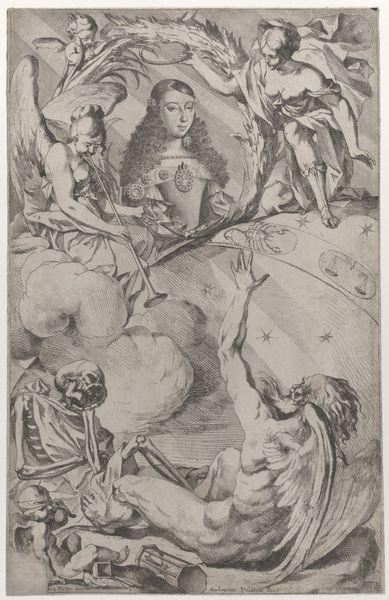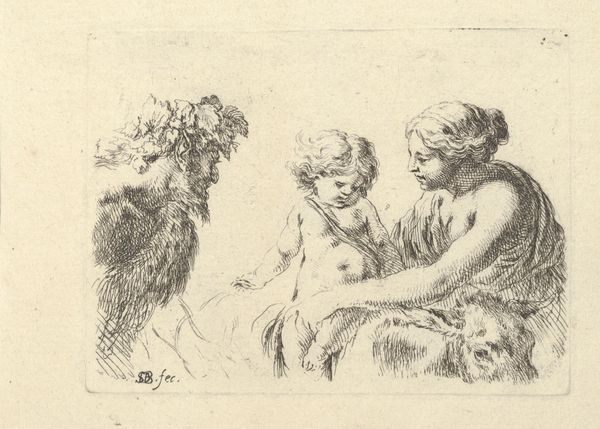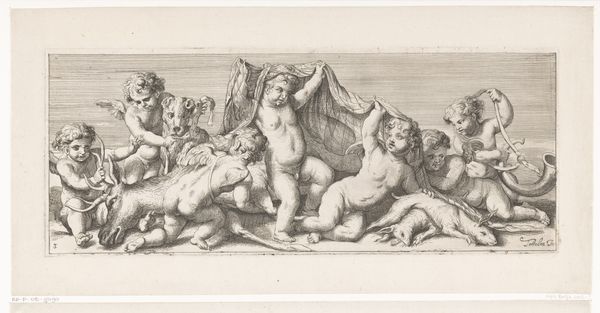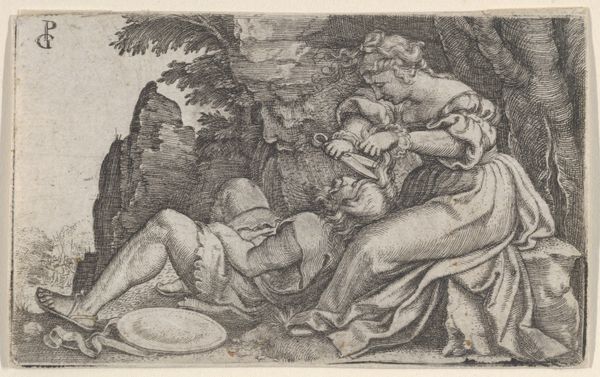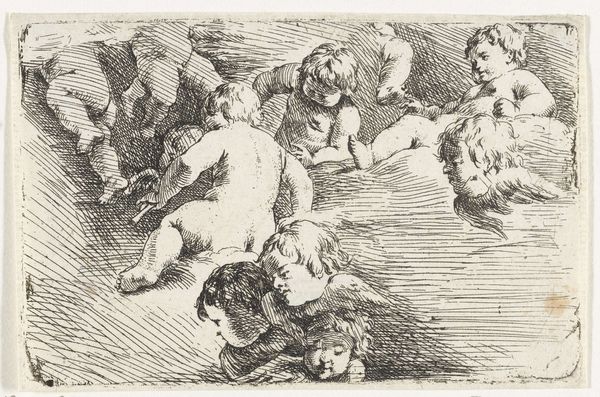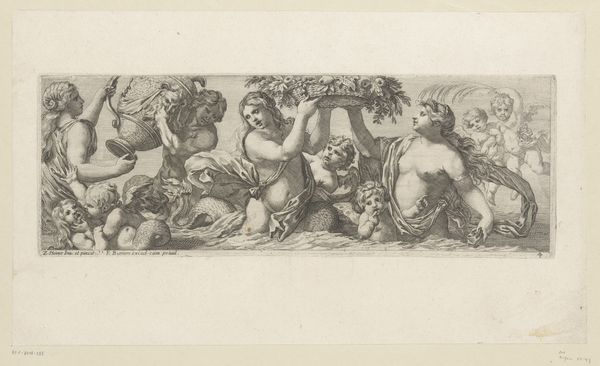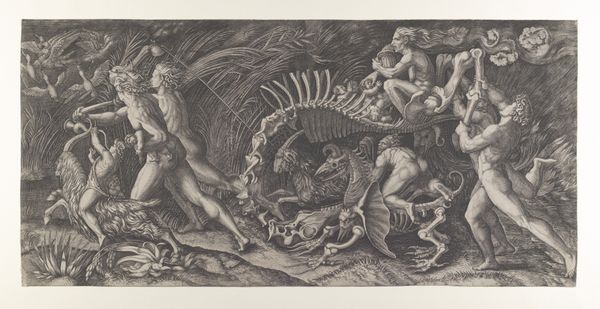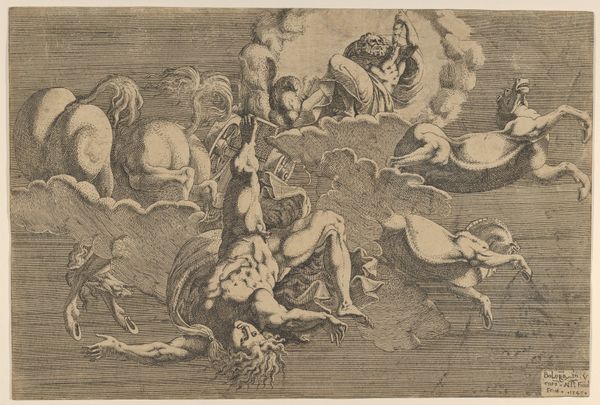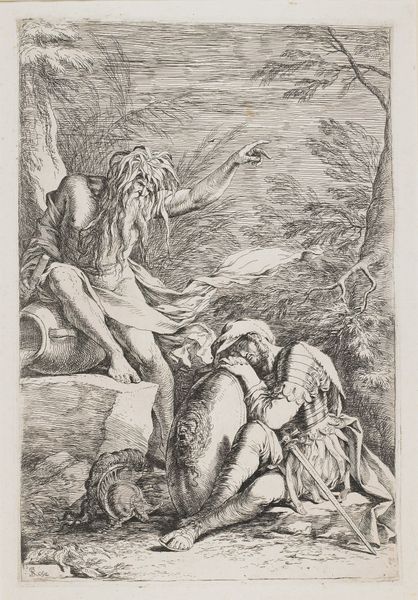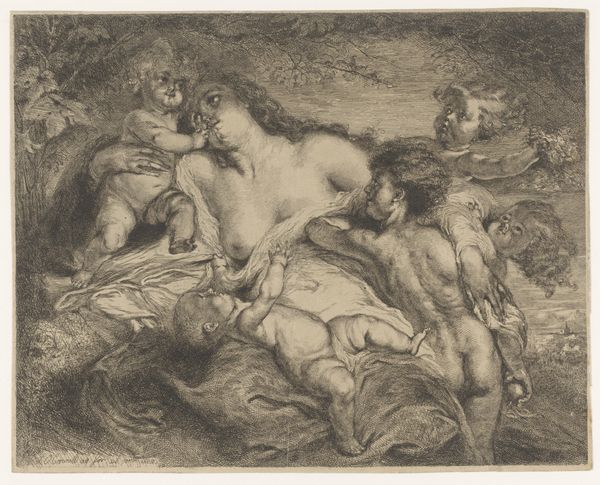
drawing, etching, ink
#
drawing
#
ink drawing
#
allegory
#
baroque
#
etching
#
figuration
#
ink
Dimensions: height 129 mm, width 379 mm
Copyright: Rijks Museum: Open Domain
Curator: Let’s discuss this etching, “Faun with Bacchante and Putti,” created sometime between 1626 and 1665. It's attributed to Michel Dorigny. Editor: My initial impression is one of chaotic abundance. It’s a tightly packed composition, full of figures, with a definite Baroque sensibility in its dramatic energy and dynamic movement. Curator: Indeed. Consider the printmaking process involved here – the precise labour of etching the image into the metal plate, then the multiple impressions that could be made. This allowed for wider dissemination of classical themes beyond the elite. Editor: And those classical themes were being shaped and consumed in particular ways by the social elite. Bacchantes and fauns were popular subjects, reflecting the artistic and aristocratic fascination with classical antiquity, its gods, and their stories. There’s this performative embrace of the ‘pagan’ past within the confines of the court and educated circles. Curator: The very materiality of the ink, pressed onto paper, also speaks volumes. Note the tonal variations Dorigny achieves. It speaks of the skill needed to control the etching process, from biting the plate with acid to inking and printing. This also allowed the images to travel. Editor: Travel is key! Prints like this acted as visual currency across Europe. Dorigny worked with the established imagery of the era but transformed these mythical stories into commodities. The print makes classical subjects available and interpretable across geographical distances, and perhaps socioeconomic barriers too. Curator: Precisely. Dorigny demonstrates an awareness of artistic and material processes inherent to printmaking and an engagement with classical traditions that resonate even today. Editor: And for me, reflecting on Dorigny's print offers a reminder of how art's meaning shifts according to historical context. It serves as a mirror to changing cultural values, social customs, and historical powers.
Comments
No comments
Be the first to comment and join the conversation on the ultimate creative platform.
